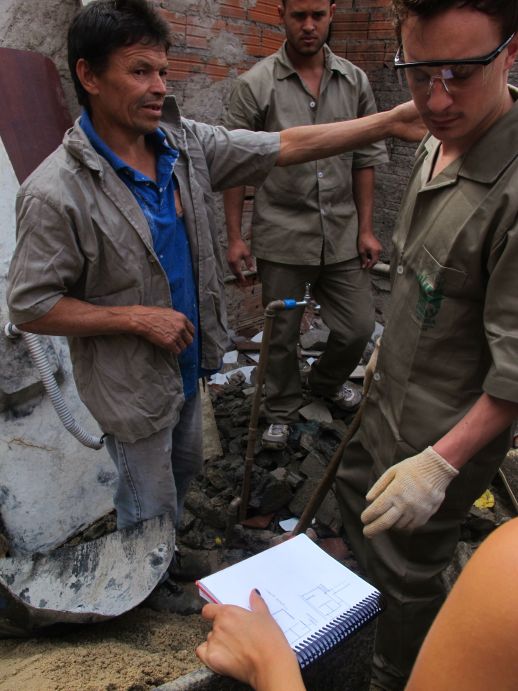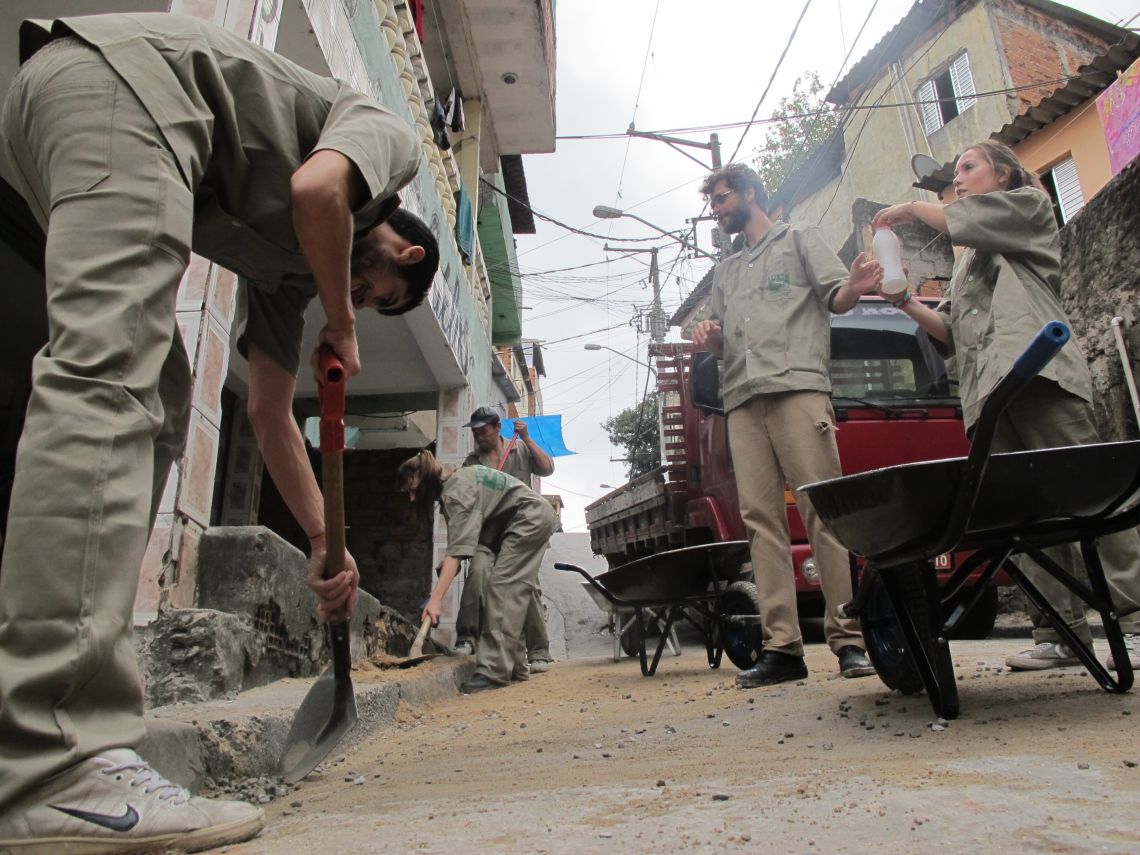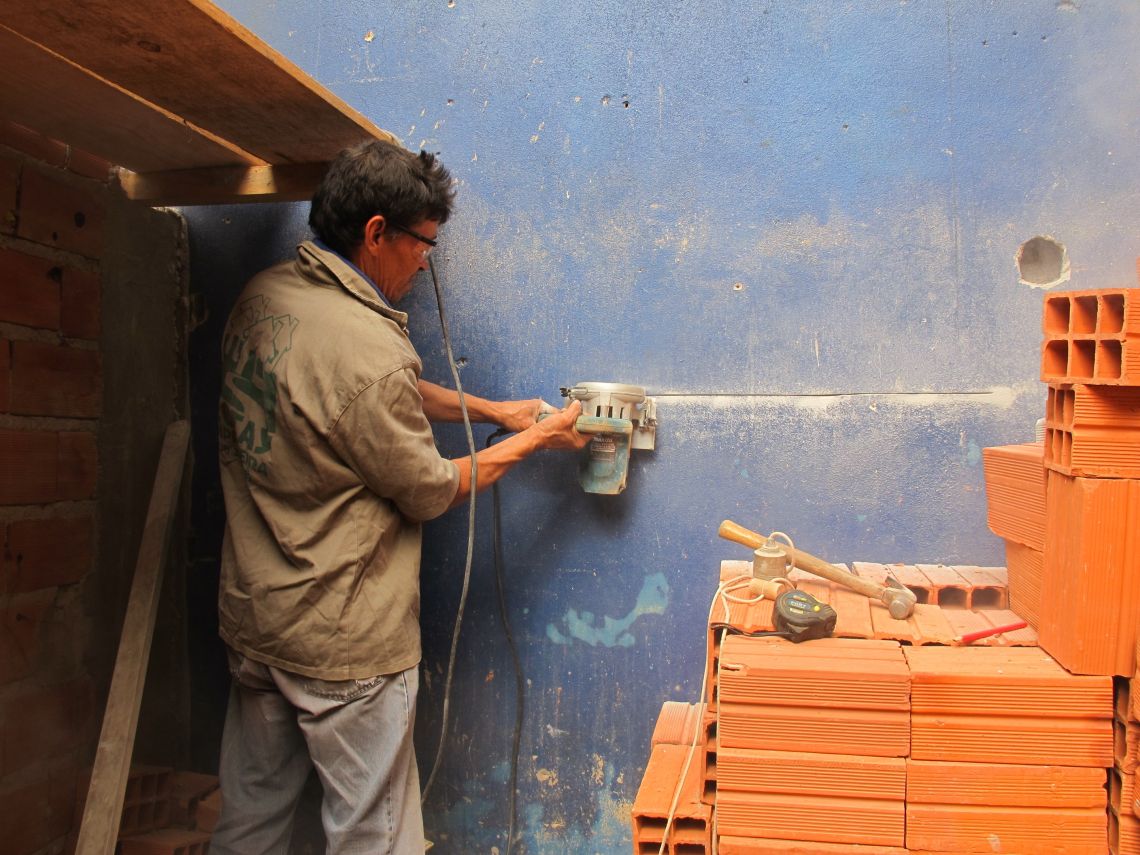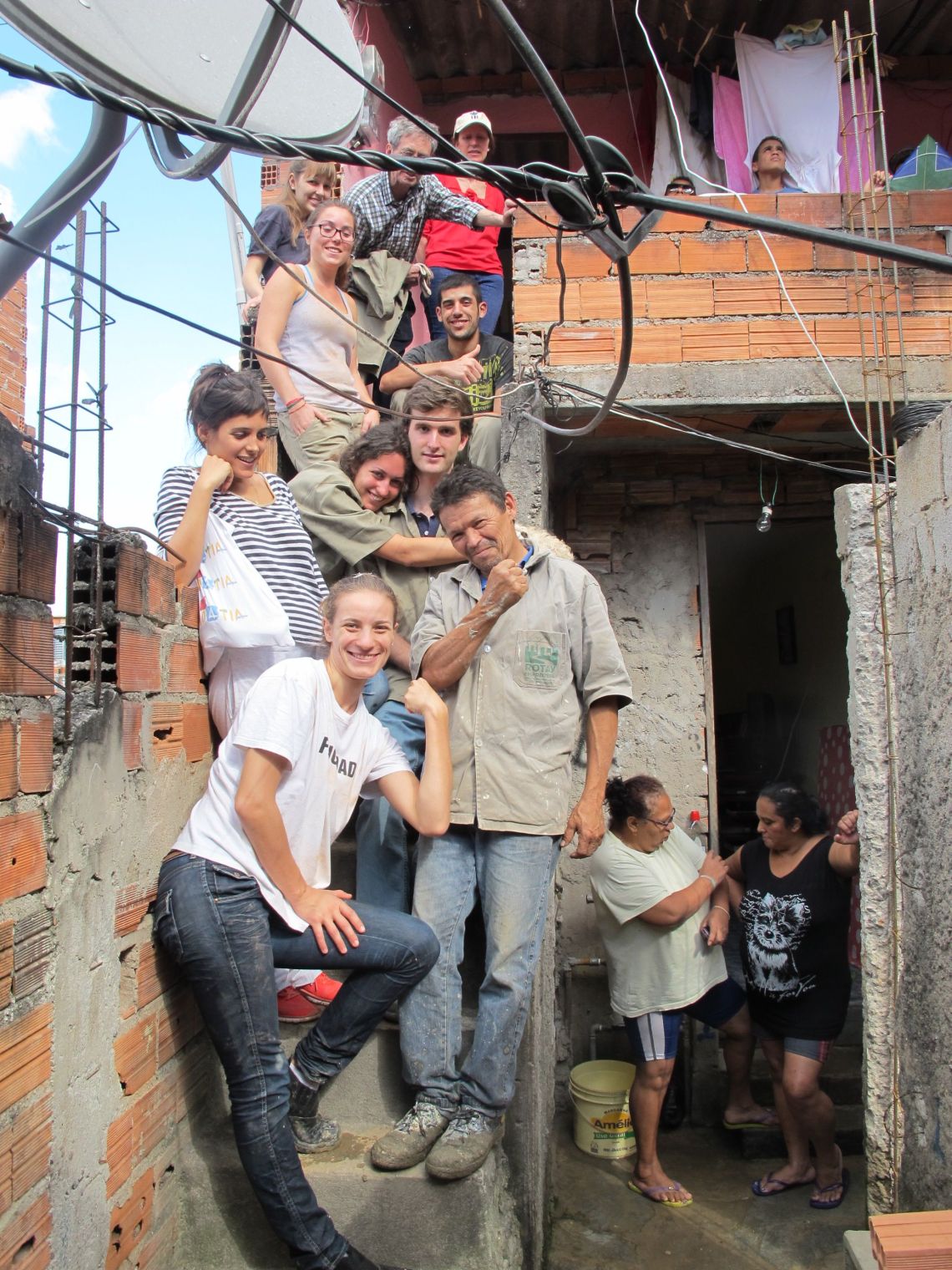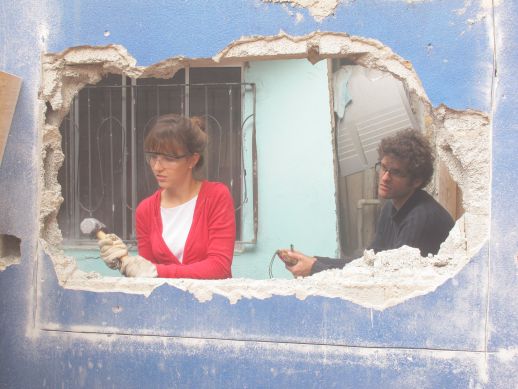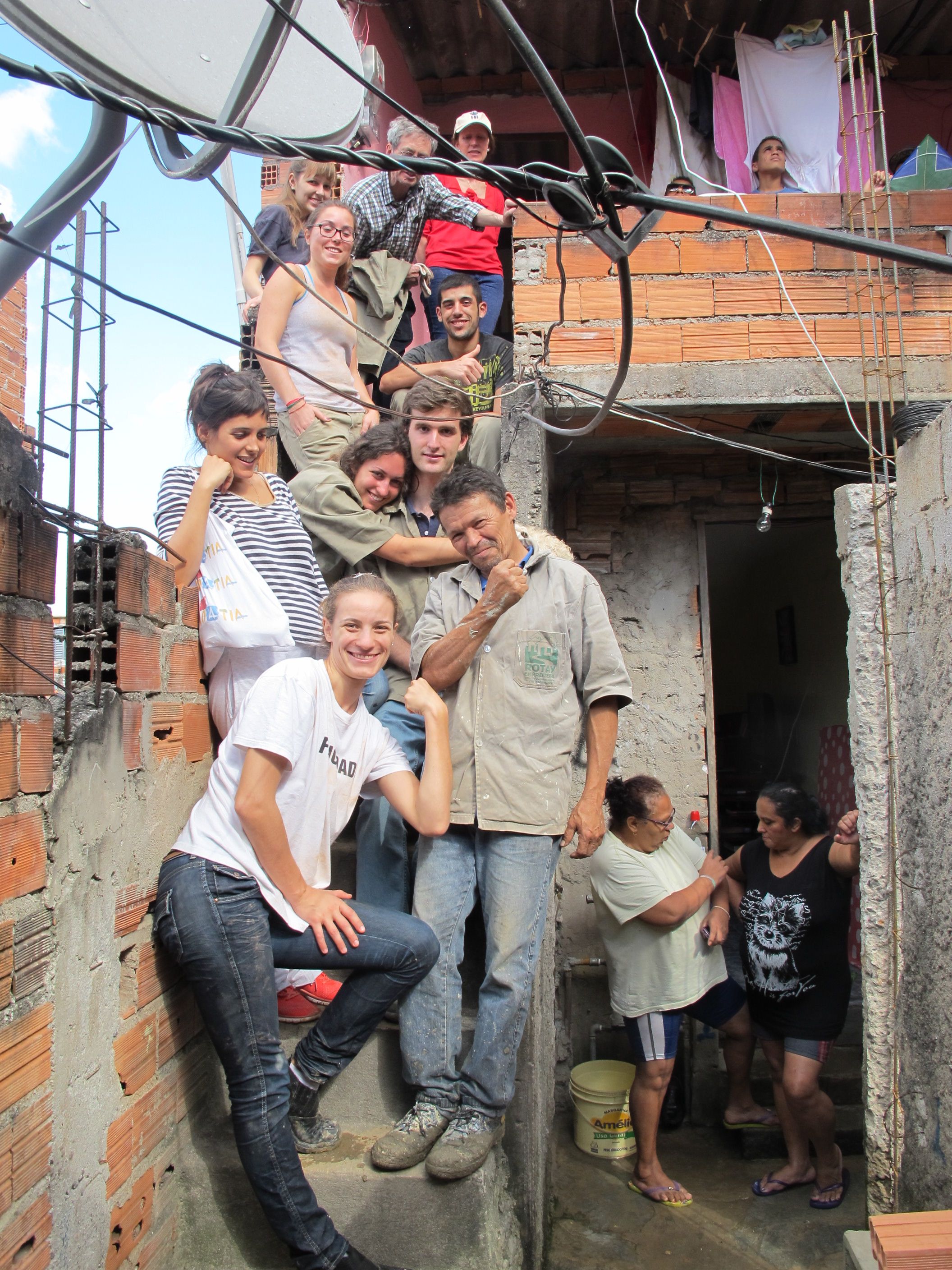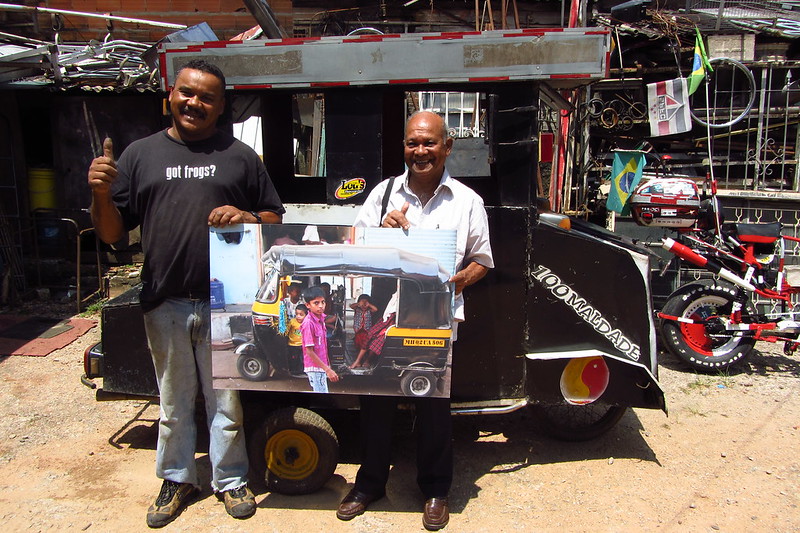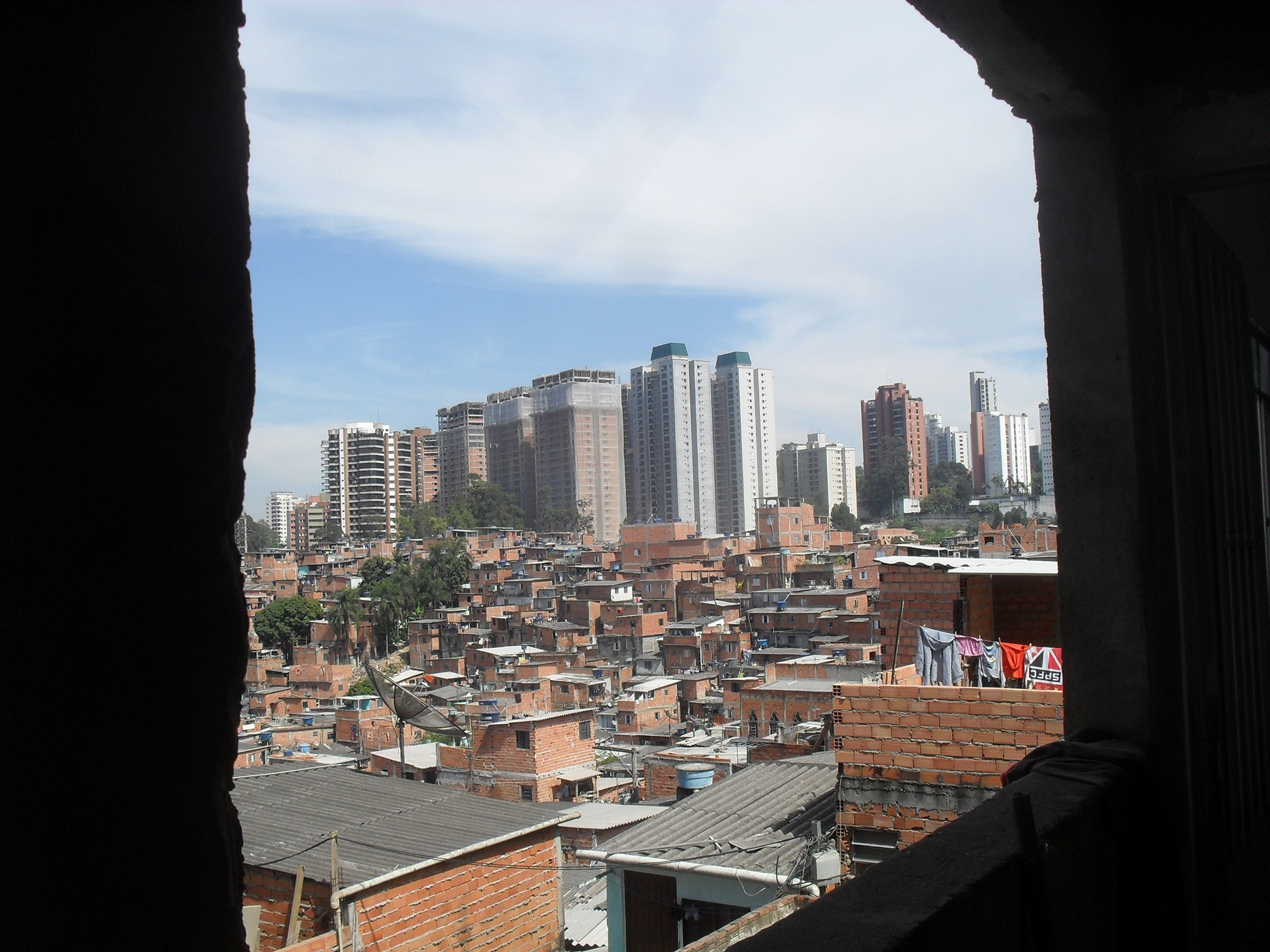Work In Progress: Casa Do Ataide

Work In Progress: Casa Do Ataide
Ataide lives in Sao Paulo, in a neighbourhood to the south of the city called Paraisópolis, which he helped build. Ataide is a mason, and hundreds of the homes in Paraisópolis are made with his tiles, his mortar and by his hands.
Ataide’s neighborhood looks different from the others in Sao Paolo, where white high-rises of steel and stucco look down from narrow balconies onto neat gridded streets. In his neighbourhood, there are no high-rises. Here, rooflines of corrugated steel hang low over winding, narrow roads. Brick houses patched with tarp twist at odd angles into the slope of a hill, their walls flush with nothing. Near to Ataide’s house, a pipe burst, and the unpleasant smell attracts a crowd of neighbours, demanding it be fixed.
The Brazilian government is anxious to get rid of neighbourhoods like Paraisópolis. A view of the favela inspires fear in the middle-class and disgust in the foreigner. To them, the outsider, the favela is, in the words of Elizabeth Bishop, a ‘fearful stain’ of poorness that clings and spreads up green Brazilian hills. Sensitive to these impressions, the government has invested in many, many programs to rehabilitate Ataide’s neighbourhood and others like it. Each iteration of these programs begins the same way–with its demolition– and ends the same way–with a high-rise. The success of these programs is limited.
The high-rise, it turns out, doesn’t meet the social and economic needs of its residents because space in a high-rise can’t do the same work as space in a horizontal neighbourhood. In Paraisópolis, the ground floor of a home that opens to the street can be used as a restaurant, or a shop, or a bar. A spare room appended to the back of the house can be let to a tenant. These homes aren’t just places to live—they’re income-generators.
They’re also income-enablers. People who live in Paraisópolis work in service industries inside the neighbourhood and in the wealthier neighbourhoods around it, where they find jobs as maids, plumbers, contractors, shop assistants, or white collar jobs in the city. Some government programs relocate residents to apartment buildings on the periphery of the city, depriving people of employment by distancing them from the markets for their services.
We see similar limitations in the rehabilitation programs of Sao Paolo and the rehabilitation programs of Mumbai: their outcomes fail because their processes are flawed. In imagining new housing solutions, municipal governments in India and in Brazil do not seek the inspiration, expertise, and knowledge of local residents, contractors, and designers.
In May 2013, URBZ Sao Paulo, led by architects Fernando Botton, Gabriella Santana, and Marcella Arruda, broke ground on a project that pilots a new process for rehabilitation, one which includes—in fact, relies upon—local residents and builders as developers of their own neighbourhoods. The project: Casa do Ataide.
Ataide, our expert mason, lives in a small home with one window shared by six people. By collaborating with Ataide to construct his own home, URBZ Sao Paulo demonstrates self-development as an alternative to government-administrated rehabilitation programs, and learns a lot from Ataide about local construction practices in the process.
During the first two weeks of construction, the team purchased building materials and dug a foundation under Ataide’s supervision, while his sons listened to Baile funk upstairs. The team considered retreating the living room wall back 50cm from his neighbour’s house to improve ventilation and make a place to install another window—until Ataide pointed out that his neighbour could easily push his own wall into those 50cm. Empty space, it turns out, doesn’t stay empty in Paraisópolis for long.
In June, the team built up the walls of the ground floor, and butted heads with Ataide over the support columns in the middle of the house. Our architecture students wanted to leave the beams exposed to improve light and circulation; Ataide thought exposed beams would make his home look like a garage. Ataide had a point. Our team went back to stacking bricks while a neighbourhood girl took up residence on the staircase, where she observed the team work and offered unsolicited opinions about the construction.
Because Ataide could only work on his house on Saturdays (the other days he has to earn a living), construction slowed during July and August. But as of this month, URBZ Sao Paulo has managed to raise the entire frame of the new house—the pillars, beams, and slab. All that’s left is to pour the concrete, and after that, Atiende and his family will have their house back.
Click here for more photos of the construction process.
Sophia Angelis is a recent graduate from Harvard University currently in Mumbai on a research grant from the South Asia Institute. She is a volunteer with URBZ, researching alternatives to the displacement and rehabilitation of “slum-dwellers.” Gabriella Santana, Marcella Arruda and Fernando Botton contributed to this post.

